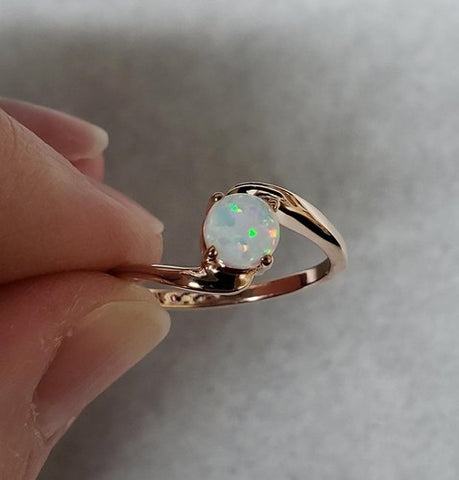October Birthstone: Opal
The name of this, the traditional and known October birthstone, is known to have originated in India (the source of the principal opals brought to the Western world). In contrast, in Sanskrit, it was called Upala, which means a "precious stone". In antiquated Rome, these became opalus. Most opals are esteemed for their shifting tones in rainbow shades- a marvel known as "play-of-colours."
The October birthstone's emotional play-of-colour has roused writers to compare it with galaxies, fireworks and volcanoes. Bedouins once accepted opal held lightning and fell from the sky during thunderstorms.
Ancient Greeks thought opals presented the bestowed prediction and protection from disease; for quite a long time, Europeans kept up with opal to symbolise hope, purity, and truth. Many years prior, opal was accepted to exemplify the ethics and virtues of every single hued stone.
Opal is likewise the stone given to celebrate the fourteenth wedding anniversary.
Where is Opal found?
The opal birthstone can be found in many places- the fields are the most known places on the planet for the October birthstone. Ethiopia, Mexico and Brazil are likewise significant sources. In addition, different stores have been found in Central Europe, Honduras, Indonesia, Madagascar, Peru, Turkey and the United States.
Lightning Ridge, a small community in New South Wales, Australia, is acclaimed for delivering valued black opal. Lightning Ridge gets little rain and bakes in the searing summer temperatures, a dry and rough district mellowed simply by little trees and clean brush. The environment is excessively unforgiving to the point that miners often live underground to find relief from the scorching heat.

Australia is additionally a source of different sorts of the October birthstone. White opal is found in the White Cliffs space of New South Wales, just as in Mintabie, Andamooka and Coober Pedy in South Australia. Boulder opal, which comes from just a single location on the planet, is mined in Queensland.
In Ethiopia, the October birthstone is found close to the town of Wegel Tena in Wollo Province. Travel 340 miles (around 550 kilometres) north of the capital Addis Ababa and up 8,000 feet (2,400 meters), where miners pry opal from shafts dove into the side of a plateau. Gemstones uncovered here range in body tone from white, yellow, orange and earthy red to "chocolate" brown. Some of the opals show play-of-colours. Another mine, in Ethiopia's Shewa Province, yields the pined for black opal, just as orange, white and precious stone opal. Its fortunes are covered in cliffs that tower over the landscape.
Querétero, a state in Mexico, is known for delivering fire opal in yellow, orange and reddish-orange to red, some with great play-of-colour. The mines are a tourist location, and getting to them requires taking a country road through thick forests of pine and oak, past scrubby plateaus of desert shrubs and cacti, and up winding mountain streets.
Opal Birthstone Care and Cleaning
Opal might be operated by impregnation with oil, wax or even plastic. Opal doublets or trios are usually fine cuts of opal stuck to a base material and covered with a thin dome of clear quartz. The most reliable method to clean this October birthstone is with warm and soapy water. Other cleaning tactics may harm the opal or filler material.

Note that prolonged openness to water might weaken the glue in opal doublets and trios. Indeed, even natural opal can break whenever presented with high heat or unexpected temperature changes.
This October birthstone goes from 5 to 6.5 on the Mohs size of hardness. To prevent gems set with harder jewels from scratching opal, store them separately. Rubies, diamonds, sapphires, and emeralds are only a couple of the gems that can scratch the October birthstone.

